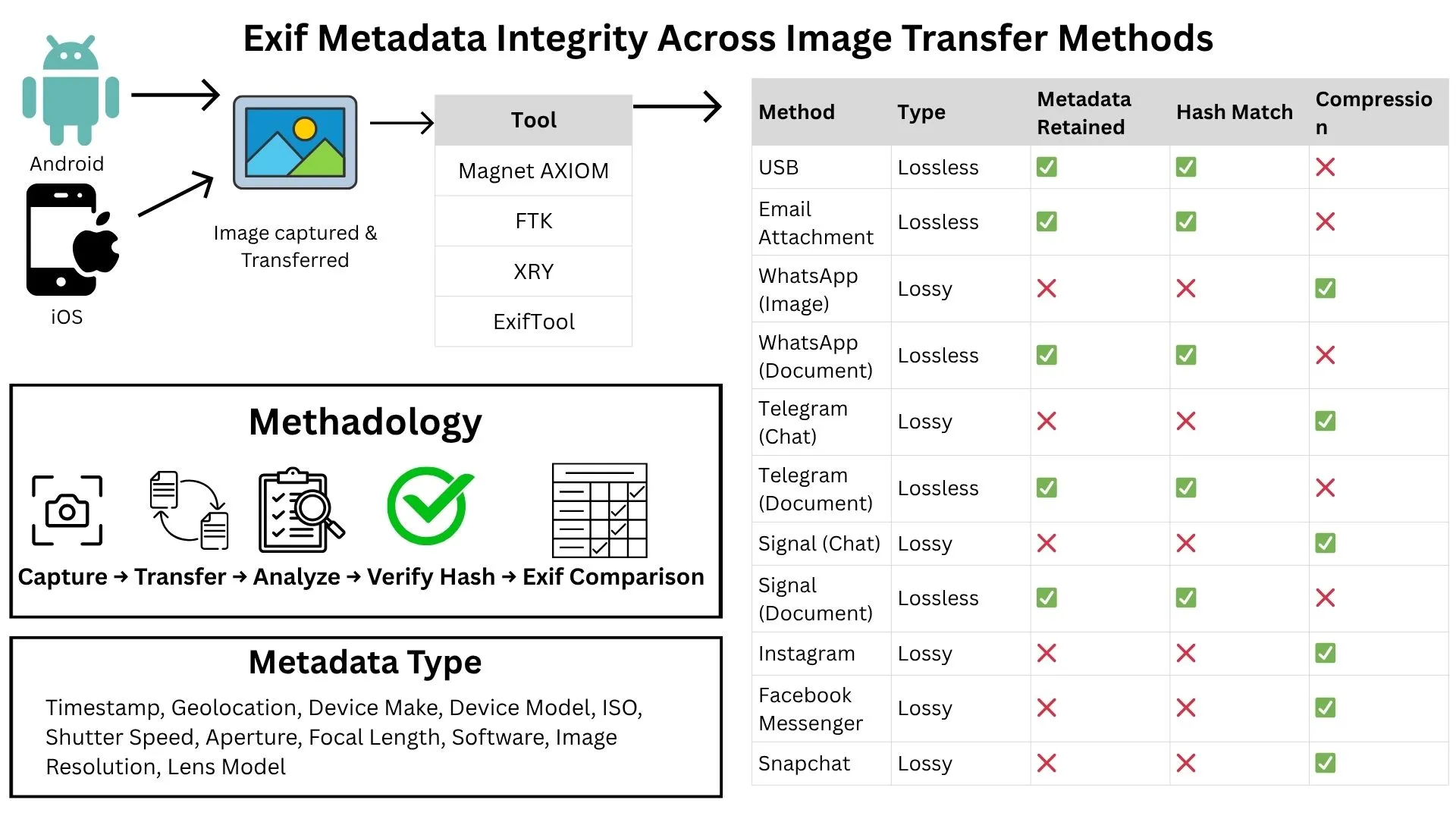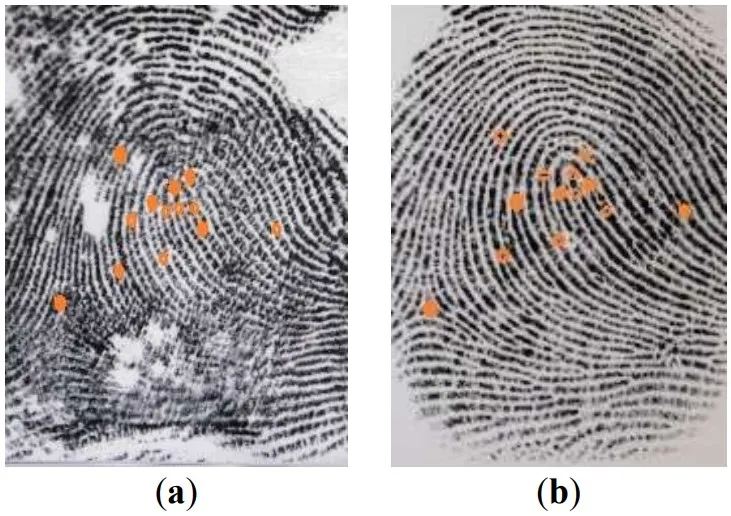Found 2 results
Open Access
Article
18 June 2025Forensic Value of Exif Data: An Analytical Evaluation of Metadata Integrity across Image Transfer Methods
Exif metadata contained in digital photographs is an important forensic resource, offering authentic information like timestamps, geolocation, and device identifiers. The research assesses the integrity of Exif information on various methods of image transmission, such as USB, email, and messaging platforms like WhatsApp, Telegram, Signal, Instagram, Facebook Messenger, and Snapchat. With the controlled image dataset of Android, iOS phones, and the Flickr Creative Commons collection, we examined metadata preservation using forensic software (Magnet AXIOM, FTK, XRY, ExifTool). Document-based modes and direct transfers (USB, email) maintained all Exif fields and file hashes, providing forensic integrity. Chat/image-based transfers, fueled by compression, effectively remove metadata, changing the file integrity. These results emphasize the necessity of platform-aware evidence handling in order to preserve metadata integrity during digital forensic examinations.

Open Access
Article
29 January 2024Determining the Identity of Corpses Using Fingerprints: Results from Practice and Analysis of Process Used in the Republic of Serbia
In today’s world, when there is a constant fight against organized crime and terrorism, when we have cases of mass accidents (plane crashes, train crashes, buses, etc.), the constant need for precise and quick identification of persons is evident in these cases. When we have situations with a large number of dead in various conditions, as well as complete or only parts of the body being on the spot, there is a need to use scientific and forensic methods in order to find out the reliable identity of these people. Furthermore, there is a need, in some cases, to identify persons who committed suicide, were killed, or died a natural death (accidental death) and who do not have documents according to which their identity can be determined. The aim of this paper will, however, be to identify a group of persons who need to be identified, known as unidentified corpses. Method. Describe and discuss the way of determining identity based on dactyloscopic data, which provides accurate and unambiguous identification, using fingerprints. Results. The identity was determined in 1271 cases of unidentified corpses by dactyloscopic comparison of fingerprints with a database containing fingerprints of about 8,000,000 indisputably identified persons. It was confirmed in 1139 cases. Conclusion. The high degree of identification in our research, as much as 89.6%, makes this method rightly represented as a standard method for confirming a person’s identity.
